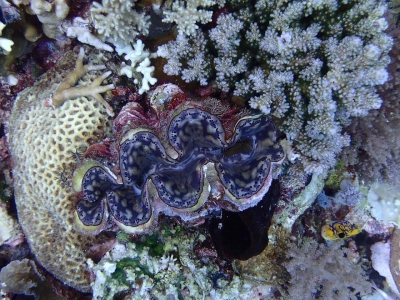
Giant clams are iconic megafauna. And these creatures face several threats now. What are they?
Though the term megafauna is generally accepted and used to refer to large creatures, research papers have claimed that it sometimes includes smaller creatures and that there may not be any specific scientific approach for defining megafauna. Irrespective of the lack of clarity in the definition, giant clams have been classified as megafauna. Calling coral reef their home, giant clams are the largest aquatic mollusc on Earth, weighing up to 250 kg and one metre long.
They are found in the Indo-Pacific waters, and common in Australian waters. However, the same cannot be said of other regions. Their populations have been over-exploited for meat and shells. Some are said to have gone extinct locally. And so, not surprisingly, nine giant clam species have long been included in the IUCN’s Red List of Threatened Species.
It is said that breeding programmes for more than 30 years have helped rebuild over-exploited wild populations in the Pacific Islands, Southeast Asia, and Japan. Even as the demand for their flesh and shell continues, they’re facing new threats “marine heatwaves and acidifying oceans” and “poor water quality and lower light levels caused by sediment-heavy run-off from cities and farms”. Just like corals, giant clams have a symbiotic relationship with microalgae. When stressed (due to reasons such as warming waters), the giant clams expel these microalgae and turn white – they bleach, just like corals.
But does this mean giant clams will soon become a thing of the past? Not necessarily. While continuing the breeding programmes, researchers feel that finding new ways to manage clams on coral reefs “such as by seeking out possible new habitat for giant clams and breeding more resilient individuals” – can still save them from these threats. Other suggestions include aquaculture programmes that help baby clams get used to slightly warmer, more acidic and darker waters during breeding and rearing before transplanting them out to the wild” and offering the clams “symbiotic microalgae that are more tolerant to higher temperatures or light levels in early life”. The best part? By protecting their habitat, we protect not just the giant clams but also corals, fish, and other invertebrates.
Picture Credit : Google




